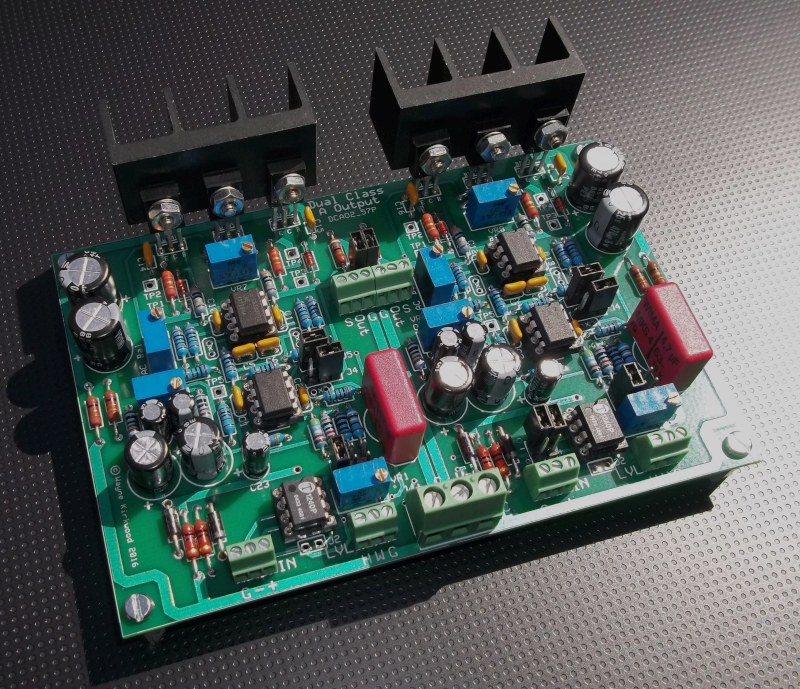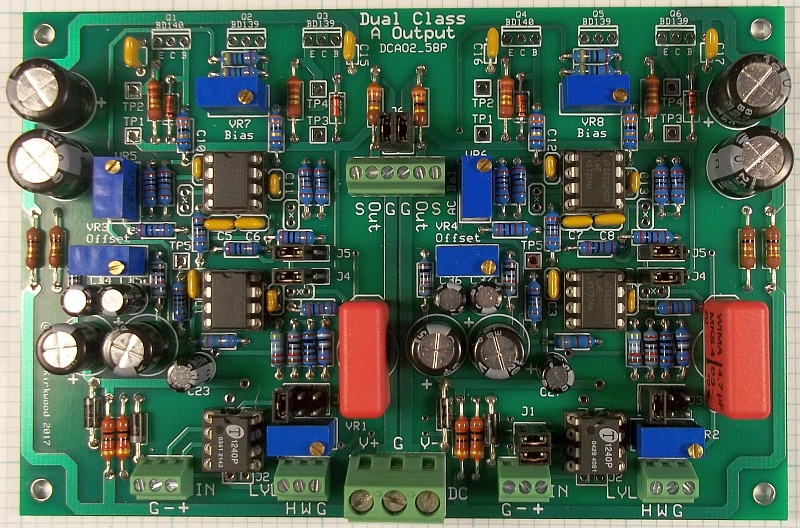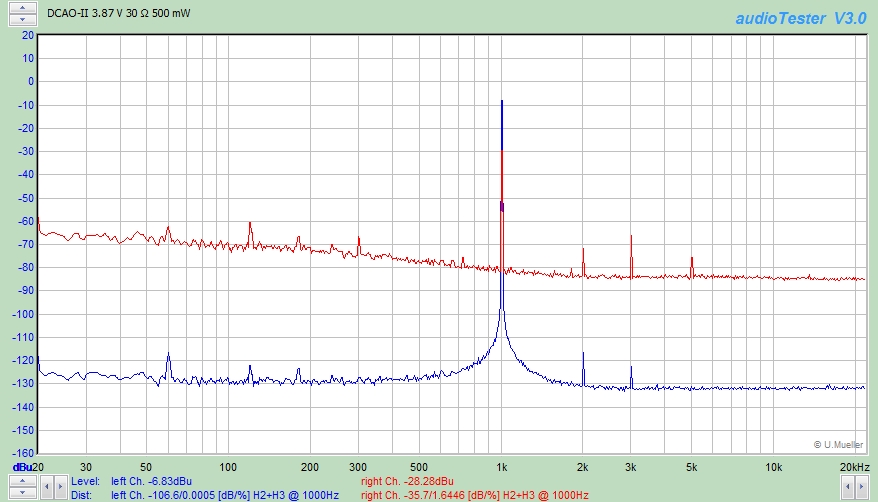Dual Class-A II Headphone and Line Amplifier PC Board: https://ka-electronics.com/shop/index.p ... ch=class-a
Update September 26, 2022. Updated assembly instructions: https://ka-electronics.com/images/pdf/D ... 092622.pdf
Background Information
The DCAO2 is based on the original Dual Class-A concept of using a "common mode" signal drive and differential bias drive to control a BD139/BD140 NPN and PNP output pair. In the original Dual Class-A circuit, a THAT1646 or DRV134 line driver was used in an unconventional configuration where the Sense lines were driven by signal in "common mode" with a Vbe bias reference driving the "normal" differential input. The two outputs of the THAT1646 drive the current boost transistor bases. The NPN output is level-shifted up by the Vbe reference, the PNP output is "voltage-mirrored" down by the Vbe reference and both are driven together by signal.
The result is a DC-stable, high-linearity line or headphone output with very low distortion running open loop. With a high idle current, around 85-100 mA, low distortion outputs up to 100 mW are possible. The original discussion is located here: viewtopic.php?f=6&t=23
The DCAO2 Dual Class-A II Line and Headphone Amplifier improves on the original design to provide both voltage gain and optional global feedback.
The DCAO2 output current booster is identical to the original DCAO but the DCAO2 pre-driver circuit has been changed to use op amps which emulate the THAT1646 concept of common mode signal and differential bias drive. Though the THAT1646 and DRV134 are excellent devices it was found that the even-order distortion of the driver stage could be reduced further by trimming.
Higher bandwidth is also possible using a dual op amp driver. The DCAO2 rise time is about 100 ns, its' small-signal bandwidth is 3.5 MHz and its' slew rate about 20V/us. (Using LME49720s or OPA1612s.)
A gain stage has been added to the DCAO2 which permits optional closed loop operation. Global feedback extends the output capability of the DCAO-2 to several watts in Class A/B. At power levels below 100 mW, operation remains in Class-A.
The advantage of having closed loop operation at lower power levels is a reduction in output impedance.
The high linearity of the DCAO2 output running at 85-100 mA does not produce errors requiring corrective feedback at power levels below 100 mW. The benefit of feedback is reduced output impedance.
The open loop output impedance of the DCAO and DCAO2 is just under 2 Ohms. Running closed loop the DCAO2 closed loop output impedance is reduced to about 40 mΩ. With the DCAO2 the user can drive headphones with "0 Ohm" (40 mΩ) Rout, less than 2Ω (open loop) or with any Ro of their choosing.

Dual Class-A II, DCAO2, Headphone and Line Amplifier PC Board

Dual Class-A "DCAO2" Headphone and Line Amplifier Schematic
Mouser Project Manager link to the Dual Class-A II parts list: http://www.mouser.com/ProjectManager/Pr ... b5edbf3bcb
Dual Class-A II, DCAO2, Headphone and Line Amplifier assembly instructions: https://www.ka-electronics.com/images/p ... ions_7.pdf
Some power and distortion measurements for the DCAO2 can be found here: viewtopic.php?f=6&t=799&start=32
A circuit description will soon follow.


